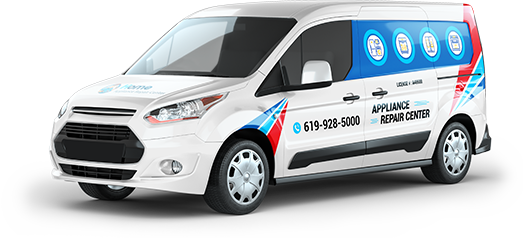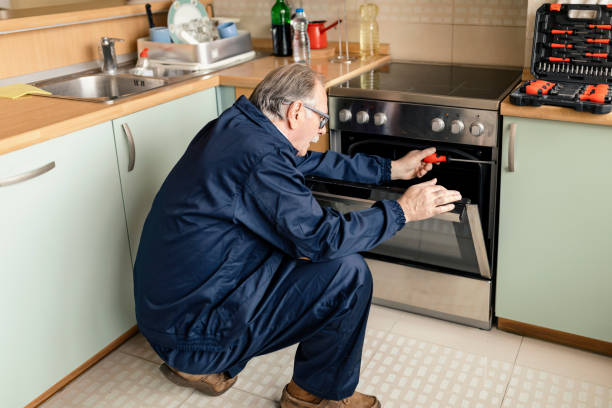The oven thermostat and thermocouple are critical components that ensure your oven operates efficiently, providing precise temperature control for all your culinary creations. However, these components, like any mechanical parts, require periodic inspection and maintenance to guarantee their functionality and reliability. In this comprehensive guide, we will explore the significance of conducting regular checks and maintenance on the oven thermostat and thermocouple to keep your kitchen appliance running at its best.
Understanding the Oven Thermostat and Thermocouple
Oven Thermostat:
The thermostat is the control center of your oven, regulating the temperature to maintain the desired heat level. It works in conjunction with the thermocouple to achieve accurate and consistent temperatures during cooking.
Thermocouple:
The thermocouple is a sensor that measures the temperature inside the oven. It generates a voltage signal based on the temperature, allowing the thermostat to adjust and maintain the desired heat setting.
Signs of a Malfunctioning Thermostat and Thermocouple
Inconsistent Temperatures:
One of the most apparent signs of an issue is inconsistent temperatures. If your oven struggles to reach or maintain the set temperature, it could indicate a problem with the thermostat or thermocouple.
Overheating or Underheating:
If your oven tends to overheat or underheat, even when set at a specific temperature, it’s a clear indication that the thermostat or thermocouple may need attention.
Uneven Cooking Results:
Unevenly cooked dishes, where some parts are overcooked while others remain undercooked, may be attributed to a malfunctioning thermostat. The inconsistency in temperature can result in uneven cooking.
Longer Cooking Times:
If you notice that your recipes are taking significantly longer to cook than usual, it could be a sign that the oven is not reaching the desired temperature due to thermostat or thermocouple issues.
Error Codes or Faulty Displays:
Modern ovens often come equipped with digital displays and error code features. If you encounter error codes or notice glitches in the display, it may be indicative of a problem with the thermostat or thermocouple.
Importance of Periodic Inspection
Еnsuring Precision in Cooking:
Regular inspection of the thermostat and thermocouple ensures the accuracy and precision of temperature control. This is crucial for achieving consistent cooking results and preparing dishes to perfection.
Preventing Energy Waste:
A malfunctioning thermostat or thermocouple can lead to energy wastage as the oven struggles to maintain the desired temperature. Periodic inspections help identify issues early, preventing unnecessary energy consumption.
Extending Appliance Lifespan:
Timely inspections and maintenance contribute to the longevity of your oven. Identifying and addressing thermostat or thermocouple issues early on can prevent more extensive damage that may lead to costly repairs or replacements.
Enhancing Safety:
Malfunctioning thermostats or thermocouples can pose safety risks, including the potential for overheating or electrical issues. Regular inspections contribute to a safer cooking environment.
Simple DIY Inspection Steps
Visual Inspection:
Start with a visual inspection of the thermostat and thermocouple. Check for any visible signs of damage, corrosion, or loose connections. Ensure that the wiring is intact and that there are no burnt areas.
Calibration Check:
If your oven has a calibration feature, use a reliable oven thermometer to compare the displayed temperature with the actual temperature inside the oven. This helps determine if the thermostat requires calibration.
Testing with an Oven Thermometer:
Place an oven-safe thermometer in the center of the oven and set it to a specific temperature. After preheating, compare the thermometer reading with the set temperature. A significant variance may indicate an issue.
Check for Gas Smells:
For gas ovens, be attentive to any unusual gas smells, which could be a sign of a faulty thermocouple. If you detect a gas leak, immediately turn off the oven and seek professional assistance.
Professional Maintenance and Repair
Scheduled Professional Inspections:
Consider scheduling periodic professional inspections for your oven. Professional technicians have the expertise to conduct thorough assessments, identify potential issues, and perform necessary repairs.
Thermostat Calibration by Professionals:
If your oven requires thermostat calibration, it’s advisable to have this done by a professional technician. They can ensure precise calibration, optimizing the oven’s temperature control.
Replacing Faulty Components:
If the thermostat or thermocouple is found to be faulty during an inspection, it’s essential to have the damaged components replaced promptly. Delaying repairs may lead to further damage and compromise the oven’s performance.
DIY Maintenance Tips
Gentle Cleaning:
Over time, dust and debris may accumulate around the thermostat and thermocouple. Use a soft brush or compressed air to gently clean these areas, being careful not to damage any components.
Checking Wiring Connections:
Inspect the wiring connections to ensure they are secure and free from corrosion. If you notice any loose connections or signs of damage, tighten or replace the wiring as needed.
Calibrating the Thermostat:
If your oven allows for user calibration, refer to the manufacturer’s instructions to calibrate the thermostat. This ensures that the displayed temperature aligns accurately with the actual temperature.
Regular inspection and maintenance of the oven thermostat and thermocouple are essential practices for ensuring the efficiency, safety, and longevity of your kitchen appliance. By being attentive to signs of malfunction, conducting simple DIY inspections, and seeking professional assistance when needed, you can enjoy precise temperature control and consistent cooking results. Taking proactive measures to care for these crucial components contributes not only to the optimal performance of your oven but also to the overall enjoyment of your culinary endeavors.
If you’re having a problem with a home appliance, the best option is to contact us at HOME APPLIANCE SERVICE CENTER – the leading Repair Service Provider in San Diego. Our superior performance, accuracy, knowledge and experience make us the top choice for your repair needs. Plus, our friendly attitude and free maintenance consultation make us even more appealing. And, our after-service warranty is unbeatable. We’re open 24/7, including weekends and holidays, and in emergencies, an engineer will arrive at your door within 15 minutes of your call. So, don’t hesitate – give us a call, and HOME APPLIANCE SERVICE CENTER will solve any problem.
Contact us
(619) 928-5000
 619-928-5000
619-928-5000  Request Service
Request Service 
